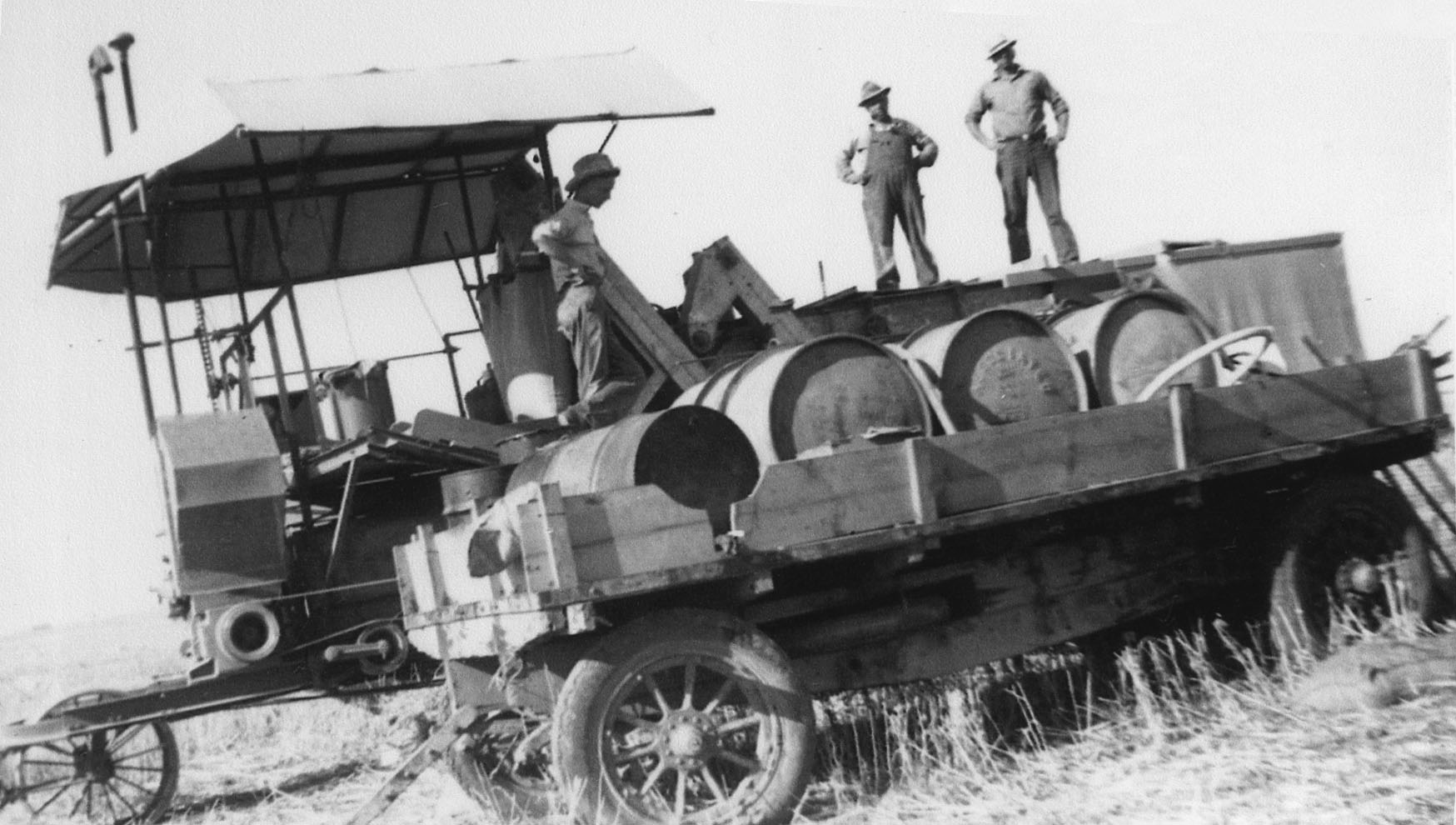Our story starts with four families…
When Charles encountered the terrain near present-day Knights Landing, its geography, climate, and locale reminded him so much of his family home that he resolved to return with his family as pioneers.
Today’s LaGrande family first put down its roots in the Sacramento Valley in the mid-nineteenth century, with the arrival of the French Canadian LaGrande, Fortier, Spooner and St. Louis families.
We begin our story with Edward LaGrande, Elizabeth Fortier, Francis (Frank) Spooner, and Sylvina St. Louis. We know little about their parents, but these four came together into two families, and then one: our family.

Two come together into one
EDWARD LAGRANDE and ELIZABETH FORTIER
Edward left Canada around 1850 and travelled to the United States. Elizabeth Fortier was born November 25, 1857, the daughter of Anthime Fortier (born 1827 in Ste. Scholastique, Quebec) and Josephette Page (dit Quercy) (born 1835 in Deux Montagnes, Quebec.

They settled in the foothills of the coastal range, west of the town now known as Willows, California.
The Fortier family settled in the northeast Sacramento Valley, where Edward met Elizabeth. They settled in the foothills of the coastal range, west of the town now known as Willows, California. There they started their family, which eventually grew to three daughters and five sons, one of whom—Joseph Herman, or J.H. LaGrande—became the patriarch of our family.
Edward’s sons spoke little of their father, but what they said suggests they had a low regard for him. One family story is that while Edward was raising his family in Clark’s Valley, he bet the home in either a poker game or a horse race (depending on who is telling the story). He lost, and legend has it that the family spent at least a few nights “under a bridge.”
Edward died in Willows, California on July 20, 1906, just shy of his eighty-first birthday.
Another two come together
FRANCIS XAVIER SPOONER and SYLVINA LOUISE ST. LOUIS
We do not know how Sylvina St. Louis and Frank Spooner met; only that after their marriage, they moved up the valley to Willows, California, where their farming and family life began. And what a family it was! Sixteen children were born of this union, and their descendants populate nearly every city, town, and hamlet in the Sacramento Valley today. Their seventh child was our matriarch, Adeline Hyacynthia.
Francis Xavier Cuillere (later Spooner) was born April 7, 1849 in Canada. “Cuillere” is French for “spoon” and when the family immigrated to the United States, the name was Anglicized to “Spooner.”
Sixteen children were born of this union, and their descendants populate nearly every city, town, and hamlet in the Sacramento Valley today.
Sylvina Louise St. Louis was born to Edward St. Louis and Marcelia “Peachy” Perpetua (nee Jack) on February 7, 1856. Her father Edward was born in Montreal, Quebec in 1817, but Marcelia— our first and only non-French Canadian ancestor in this story—was born in West Virginia in 1825. She claimed to be descended from a family who had arrived in America with Lord Baltimore, although preliminary research seems to indicate that she was adopted.
Marcelia met Edward when her family moved to Missouri. The two married on April 25, 1842 in St. Francis Catholic Church of Portage-des-Sioux, near St. Louis. Sylvina was their sixth child and third daughter.
But how did Sylvina get to California to meet Frank? Well, in the late 1840s, Sylvina’s bachelor uncle Charles signed up for a frontier exploration under the direction of Charles Fremont. Accompanying Fremont on this seminal tour and survey of California must have been nothing short of fantastic. The story goes that, when Charles encountered the terrain near present-day Knights Landing, its geography, climate, and locale reminded him so much of his family home back in Missouri that he resolved to return with his family as pioneers.

After returning to Missouri, young Charles set about convincing his parents and siblings (including our direct ancestor, his brother Edward) to move to California. He must have made a persuasive argument, because within a few short months, the family loaded its wagons, yoked its oxen, and set out in a wagon train to cross the wide prairies, the mighty Rockies, and the magnificent Sierra Nevadas on the journey to a new life on the frontier.
The St. Louis family settled in Knights Landing and Yolo County. It is reported that the first Catholic mass in Yolo County was said in the St. Louis family home. Sylvina’s mother, Marcelia “Peachy” St. Louis lived a long, full, and well documented life in Yolo County, California. Her hundreds of descendants include her great-granddaughter, Georgia LaGrande Traynham.
All four families meet in today’s LaGrande family
JOSEPH HERMAN “J.H.” LaGRANDE and ADELINE HYACYNTHIA SPOONER
In the late nineteenth century, there were several French Catholic families in Glenn County including both the LaGrande/Fortier and Spooner/St. Louis families.
In those days, people didn’t socialize outside their families on a daily basis. But communities would gather for dances and less frequently for parades or picnics. Religious holidays and celebrations were also a mainstay of social life and provided a weekly opportunity for spending time with others.

J.H. and Adeline secured some land southwest of Maxwell in Colusa County in 1905. We still hold this land today—on LaGrande Road.
Tradition holds that J.H. LaGrande and Adeline Spooner were introduced by siblings at a barn dance. J.H. was a tall young man destined to be taller—in his prime, he was a formidable physical presence. “Little Adeline,” as she was known to her sisters, was quite the opposite. Tiny in stature, but large in heart and spirit, this local beauty captured the attention of young J.H. LaGrande. The stories of their courting period are few, but we know they were married in Willows, California on January 25, 1905.
J.H. and Adeline wanted some independence. That same year, they heard about some land available southwest of Maxwell in Colusa County. They secured it and moved there from Willows in 1905. We still hold this land today—on LaGrande Road.
THE FAMILY GROWS
Around this time, after the depression, the LaGrandes began buying better machinery and better land. Committed to paying our bills on time and not over-extending, we managed to buy enough land to keep everyone busy, and no more.
J.H. and Adeline had six sons, each of whom helped build the family business.
J.H. and Adeline had six sons, each of whom helped build the family business. Ernie was the bookkeeper, Steve the mechanic, Joe the farmer and all-around hand, Matt and Harold tended sheep and took care of hay, and Vic was the cowboy. The sons helped add on a living room, dining room, and a front bedroom to the family house in about 1935. Around 1940 (or maybe 1941) we got electricity and our first telephone.

J.H. kept his crew of sons busy and would go to town each day to sell eggs and other produce and to catch up on what was going on. Adeline ran the house. She was a great cook, organized, and a very religious person. She said very little, but when she did speak, you listened. She was the one with the most power, but she never acted that way. For example, if she thought we should buy land, she would say so, and she and J.H. would talk it over, and then they would do it.
LAND PURCHASES

Our first purchases were around the home ranch, but then we went south of Williams and bought the Gochie place. Not long after we bought it, Steve married. He was the first brother to get married and he wanted a house of his own, but there was no house on this property. Joe and Matt helped Steve move a small house from Maxwell down to the Gochie place.
Next we acquired the Thomas place, just down and across the road from the family home on LaGrande Road. Gladys Thomas and her brother Orrel had lived there, and when Orrel died and Gladys married, she sold the property and its one-story stucco house to the LaGrandes. Matt and his wife Adele moved in to the house. Mike lives there now.
We also bought Forges Ranch, where we raised dry land barley, and we bought the Lynn property, over near where the freeway (I-5) is now. That was our biggest rice property.
CHANGES IN THE FAMILY BUSINESS

With the acquisition of the Thomas place, the LaGrande family started raising sheep. Matt took responsibility for managing the sheep, with help from Harold. Together they built what is now Mike’s shop.
We would put up hay at the Gochie place, and we ran some sheep there too. Though we each had our own focus, we all pitched in on big jobs like harvest or butchering.
We started to farm rice in about 1924 on the Hankins land, which we leased from the bank. Not all the first years were good rice years, but we learned from the experience and became skilled rice farmers.
We would use binders, and when we harvested the rice, we’d sew the full sacks closed. Vic was a very good sewer. He’d be up on the thresher, sewing the sacks and then dropping them through a chute so that they would hit the ground. Then we’d come along with a sled to pick the sacks up and cart them out of the field.




